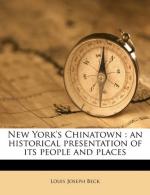|
This section contains 1,444 words (approx. 5 pages at 300 words per page) |

|
Villages. During Ming times (1368-1644) about 90 percent of the Chinese still lived in villages, most of which had about fifty families. Villages were usually smaller in the north than in the south. Few Chinese lived in single families on isolated farms. Villages were real communities, small gathering places for group activity.
Intervillage Marriage. Villagers' lives were not confined to their local streets and the nearby fields where they worked. Villages acted within a large system of social interaction. Generally, villagers had only one surname. People who had the same surnames were considered kin, if often very remote. To avoid incest taboos, married women in such villages had to have different surnames from their spouses, and therefore came from a different village, under a system operated by law and by custom. For this reason men sought wives from other villages...
|
This section contains 1,444 words (approx. 5 pages at 300 words per page) |

|




